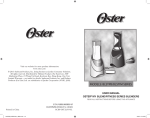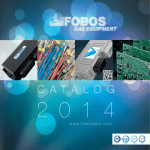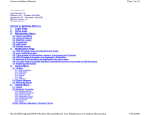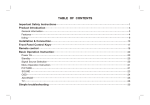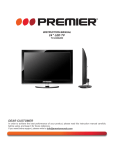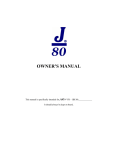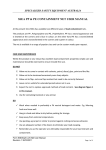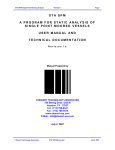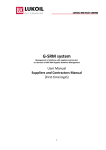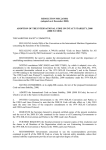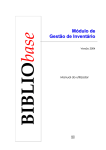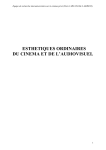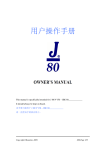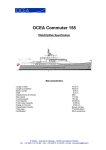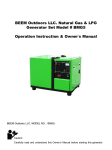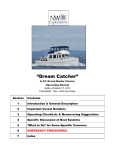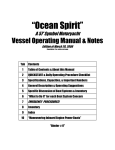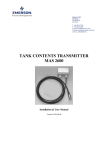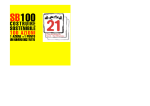Download Information Sharing Bulletin - issue nr. 23.pub
Transcript
. Information Sharing Bulletin Issue n° 23 August 2013 Summary: Collection of selected closed cases Vetting Issues Remarks to be shared Lesson’s bearing Academic lesson Lesson Learned Dear Premuda's fellows, for the use and the checks on board of these instruments. It’s time for another Bulletin and for some general reflections. Unfortunately, shipping market is still depressed and no specific signs of an increasing trend are still at the horizon. Another important issue is that by this Edition, we will stop to print and send on board paper publications: Company’s people will find the Information Sharing Bulleting available into the web page: this will save costs for printing and mailing publications, saving also the time spent for the latter and thus having the publication immediately available, upon its publication. In this sense we are aligning our Bulletin to the modern concept and system of working. But as a great person of the shipping said: I”t’s during our darkest moment that we must focus to see the light“ (Aristotele Onassiss) Despite the hard times, our Company is surviving and the help of everyone is appreciated, both on board and ashore. Nevertheless to say, we need to row all together in the same direction, to bring the ship, our ship, out of the rough seas. Briefly detailing this issue, the Academic lesson continues the excursus in the “world” of the Bills of ladings, which too often aren’t receiving the necessary attention they require and need. The Bill of Lading is the most important document among all the cargo documents: its incorrectness might lead to serious implications and problems which cost time and enormous amounts. We hope this little change will improve our current system and our efforts for easier solutions will be appreciated. Good reading to everyone! G. Mortola In this Issue: Vetting Issues Safety issues: Use of portable gas detection instruments Collision Analysys The Academic Lesson: excursus on B/L The Vetting section is always well exhaustive and is highlighting the “Repsol Factor”. The Safety section deals this time with an important argument: the portable instruments and their calibration on board. Unfortunately we have to record several issues for this matter , causing on board problems and high costs for the transport and services. In this section there will be some information which we hope will be useful to the users on board and which can help The selected closed cases: § Hazardous occurrence - Lack of knowledge of ship’s equipment § Incident - Steam burnt Information Sharing Bulletin is published by: Premuda SpA - SQE Dept. Email: [email protected] Please, send any comment to the Editor: [email protected] Be proactive! www.premuda.net . Page 2 Page 2 Selected closed cases Selected closed cases . Page 3 Selected closed cases Selected closed cases Page 3 Pagina 4 . Page 4 Vetting Issues Dear All, Let us comment the second quarter period of 2013 on Vetting activity of the Fleet. As everyone knows Company sold out M/T Framura by 30/05/2013, and let me thank the Lady for the services rendered to the Company and all of us. Title of this quarter may be the “REPSOL FACTOR”.. as a matter of fact this Oil Major vetting approach is quite indigestive for our ships and Crew Staff, as by memory all Premuda vessels need at least to try one negative before to eventually succeed to get a positive one. Here we are claiming two negative, one with Four Bay (SIRE), and one with Four Island (Safety inspection). The two things are different as we well know that the SIRE inspections are going to OCIMF and so they are public for all Oil Majors performing screening on line. REPSOL standard is quite a strict one, and surely either Four Bay either Four Island are not youngest lady, but it is quite a pity see that in less of two months Four Bay is assessed positively by SHELL, while REPSOL is always penalizing any inspected vessel. To be then underlined following points: Four Sky excellent performances, especially the 0 REMARKS in Rotterdam, in the strict path of inspections carried out after the anchor and chain incident and the clearing of all technical hold received by involved Oil Majors, plus the Exxon one, discovering about incident via OCIMF and so claiming for a direct information!! Difficulty for some Vessels, Four Wind, Four Island, for different reasons, as for instance operation in difficult areas (not reachable), or not vessel readiness, to be submitted to SIRE inspection. For these difficulties the latest SIRE of the vessels is going to be over dated and vessels might be difficult to be chartered on spot. Maximum attention and professionalism should be applied for preparing the vessel to next crucial appointment that might determine an opening/closing step on commercial vessel’s chance. Regards to all M. Leveratto *********** SIRE Inspections performed during May – August 2013 result. Next SIRE Inspection to be performed with Shell, then with BP. Vessel performed Safety Inspection (NOT SIRE) with REPSOL, Cartagena 23/07/2013 (15 No), with negative assessment. Framura Due to vessel’s age limit (20 years) approaching in July and age policy of Major Oil Companies no other inspection was performed until vessel was sold on 30 May 2013. Four Moon No SIRE Inspection performed during this period, but probably a SIRE inspection will be requested by PDVSA at first opportunity in order to verify vessel’s condition after their inspection carried out last 10 July 2013 (no SIRE inspection). Four Wind: After last Shell SIRE Inspection performed last February with positive result, unfortunately it was not possible to arrange any other inspection due to vessel’s long stay at Lome, Togo (West Africa) and voyage to Ust-Luga, Russia, where no operation was allowed at terminal due to security problems. Vessel was screened negatively by Total referring to last Shell SIRE Report, therefore inspection was requested to Shell at Tramandai, Brazil, on 15 July 2013, with no result. Then inspection was requested to Total, Eni, Statoil, BHPB -Rightship and Lukoil with the same result due to non availability of Inspectors at Tramandai. SIRE Inspection has been requested again to Shell at next discharging port, hoping to have a positive result also in order to obtain Total vessel’s clearance. Four Sky: Vessel performed SIRE Inspection with BHPBRightship, Balongang 06.05.2013 (3 NO) with very positive result, then with BP, Daesan 06.07.2013 (7 NO) with positive result. Then vessel performed SIRE Inspection with Shell, Rotterdam 29.08.2013 (0 NO), with excellent result. Exxon and Chevron referring to last Shell SIRE Report if necessary. Four Bay Bulk Carriers: Vessel performed SIRE inspection with REPSOL, Cartagena 21.05.2013 (10 NO) with negative result, to be re-inspected at convenient disport. Then vessel performed a SIRE Inspection with SHELL, New Mangalore 13.07.2013 (7 NO) with positive result. Chevron and ExxonMobil referring to last Shell SIRE Report if necessary. Next inspection to be performed either with BHPB-Rightship or with BP, which considered vessel as unsuitable due to last Repsol SIRE Report. Four Springs: no inspection performed during this period. Next inspection to be performed with BHPB-RightShip. Four Island Inspection was requested on 17 June 2013 to Shell at Al Muajjiz, Yanbu with no result, as well as to BP with same Enclosure Company analysis on M/T Four Bay REPSOL SIRE. 10.09.2013 VETTING DEPARTMENT . Pagina 5 Page 5 Vetting Issues . Page 6 Vetting Issues Page 7 Vetting Issues Page 8 Vetting Issues Page 9 Vetting Issues Page 10 Vetting Issues Page 11 Remarks to be shared Dear All, WELCOME INTO THE SAFETY PAGE! Dears readers, in this bulletin I would like treat the argument of “Use of electronic portable instrument for gas detection”. Since we noted several problems on use of portable gas analyzer instruments “Drager”, has been decided to issue a guideline that can be used as reference from all ship’s officers, to reduce instruments replacing for lack of familiarization with these gas analyzers. - Always use the line filter when sampling from remote. - If you really have to sample from a remote potentially harmful space, perform brief, spaced samplings, leaving the instrument pump fresh air for several minutes in between. - If you're not sure how to handle a potentially damaging application, don't hesitate to contact the SafetySupt and ANCB's technical staff to get advice on how to rig up a reliable and safe measure. .GUIDELINES FOR THE CORRECT MAINTENANCE USE OF ELECTRONIC - Routinely check the line filter and all the internal PORTABLE INSTRUMENTS FOR filters of each instrument. Filters must be clean GAS DETECTION and dry. PRELIMINARY REMARKS Please always consider that Dräger Portable Instruments are to be intended as lifesaving devices, for personal use, in ventilated confined spaces where high concentrations of corrosive volatile gases are not expected. The use of these instruments as tanks, processes, lines 'analyzers' can be performed for a limited time, and only if the absence of chemical contaminants, gases from the cargo, process gases etc., in high concentrations, was ascertained. If in doubt, check the atmosphere using Dräger Tubes. Measures of a different nature (e.g. continuous monitoring of % volume of O2 in a tank) must be performed with an appropriate instrument (typically, a paramagnetic-cell based Analyzer). SAMPLING AND MEASURING - Prior to sampling, check and test the atmosphere of the volume you're attaching the sampling tube to. - If a Cargo Tank is to be sampled, refer to the Cargo Safety Sheet that the charging facility is supposed to have issued. Can the Cargo release corrosive volatile substances? Is the Sculpture content substantial? If in doubt, check at least the H2S content using Dräger Accuro Pump and Tubes. - Don't let the instrument's batteries discharge completely. If the batteries get totally empty, the instrument will need a long warm-up time when switched on again. Instruments can rest on the charging cradle all the time when not in use. The electronic charger unit will prevent overcharging and/or overheating. PERIODIC CHECK-UPS - Use only Calibration Standards for Portable Gas Instruments, certified and current. - Never use gases from other sources, fire detector test bottles, lighter gas etc. - If in doubt, refer to the latest Calibration Certificates issued by the Calibration Company to identify the correct standards. - In case of LEL test, consider that different norms can be followed. 100% LEL can correspond to 5% Vol, or to 4,4% Vol (International Standard, followed by ANCB and Premuda). Check the latest Calibration Certificates to identify the correct ratio. TROUBLESHOOTING - Should an instrument sound continuously and give sensor alarms after a measuring cycle, do as follows: Switch the instrument off. Take it to a clean air area. Switch it on and start the pump Page 12 Remarks to be shared Leave it breathe in fresh, clean air for 10 minutes. Perform a Fresh Air Calibration (refer to Instrument's Instruction Manual) If the alarms don't go off, check the internal filters. - Don't overlook cross-sensitivity. In the sampled mixture can be found gases to which the sensor are cross-sensitive. This can result even in negative (below-zero) readings. If in doubt, refer to the Cargo Data Sheets issued by the producer. Cross-sensitivity can in some cases explain temporary drifts, alarms and faults. Read and understand all the Sensors' Data Sheets. These, if not present on board, are available on demand in digital format from ANCB. CONCLUSIONS Once again it must be stressed that in order to obtain safe and accurate results from portable electronic instrumentation, they must be operated only by trained staff, with a good understanding of the instruments' operation, familiar with the User's Manual, and having all the written documentation, data tables and charts of sensors and gases at hand. It is moreover crucial that the person in charge, before performing a measure, makes an 'assessment' of the criticalities that might emerge from the measure procedure and/or from the subject of the measure. If in doubt, ask a superior or contact Dräger for advice. Turn the . Page 13 Lesson’s Bearing Collision between vessel at pilot station PREAMBLE - The case we are going to analyze is a real occurrence selected among those proposed by IMO, to be considered and analyzed by shipping Companies. This is the 1st case we’re going to analyze: it involves two vessels engaged in manoeuvring situation. The aim of the analysis is to put the focus on the chain of errors that led to the incident and to try to learn a lesson on “how it could be avoided”. What happened? A tanker collided with a dry cargo vessel at a river entrance. The tanker was outbound and approach‐ ing the pilot station to disembark the pilot, while the dry cargo ship had just picked up a pilot a few minutes before the collision. It was daylight but dense fog reduced the visibility to about 120 meters. Both vessels were preoccupied with pilot embarkation/disembarkation preparations. There were only the pilot and the master on the bridge of the tanker. The master was distracted with manual steering and the pilot was occupied with disembarkation arrangements. Due to circumstances of traf‐ fic and tidal current, the dry cargo ship was about 0.4 miles in the way of the outgoing channel. The vessels were aware of each other's presence 6‐7 minutes prior to the accident. The pilot of the tanker tried to contact the dry cargo ship for several minutes in vain. Later, the pilots had communi‐ cated their intentions and agreed that the tanker would head southerly and pass from the port side of the cargo ship. But the pilot of the tanker was again distracted with disembarkation arrangements and did not make the agreed manoeuvre. The last attempts of communication were unsuccessful due to radio interference. Shortly afterwards, both ships came in sight of each other and it was real‐ ized that a collision was imminent. The pilots advised to put the helm midship and to go full astern, however, the two vessels collided. There was a VTS in operation in the region but VTS operators were passive during the development of dangerous situations. The tanker suffered damage to her bow. The dry cargo ship suffered damage on the port side under the forecastle area in way of the forepeak store, forepeak tank, anchor hawsepipe, and indentation under the water line in way of forepeak tank and bulbous bow. There were no injuries or pollution. . Page 14 Lesson’s Bearing Why did it happen? The visibility was very poor due to dense fog and several inbound vessels and an outbound tanker were in the same area nearly at the same time, many of which were converging on the pilot boarding area. The vessels were distracted and preoccupied with embarkation/ disembarkation arrangements. The vessels did not monitor, track or communicate with each other and did not learn each other's intentions well in advance of the accident. The dry cargo ship drifted too much southward, well in way of the outbound traffic due to strong tidal current. Her speed was reduced considerably as she was getting ready to pick up the pilot, and this increased her drift and she landed in way of the outbound traffic lane. The bridge team of the dry cargo ship and the pilot were late to realize the developing danger caused by the ship's position. The tanker did not execute the agreed avoidance action due to distraction of the pilot. VTS took a passive approach. It only acknowledged messages but did not warn either vessel of the other's intention, despite the very poor visibility and the position of the dry cargo ship which had drifted southwards in way of the outbound traffic lane. The pilots and bridge teams on both vessels did not make a full assessment of the risk of collision. ARPA was not used effectively on either vessel to assess the risk of collision. By the time the ARPA was used on the dry cargo ship, it was too late for it to provide reliable information. Effectively, no one held the con on the bridge of the tanker because both the master and pilot had deferred to the other, there was no discussion or questioning of the intentions of the dry cargo ship, and at a critical time they involved themselves with tasks that were inappropriate given the impending close quarters situation. The bridge on the tanker was insufficiently manned in the circumstances and conditions. It did not comply with company requirements or port authority instructions to pilots, however, no ad‐ ditional resources were requested by the pilot. The communication between all parties involved was unclear and prone to misunderstanding, and use of standard marine phrases was not practiced. What can we learn? The availability of VTS, having a pilot on board or approaching to pick up a pilot must not be a reason to relax or defer taking timely and efficient collision avoidance action. It shall be recalled that with the exception of Panama Canal, responsibility always burden on Master’ shoulder. The collision avoidance action should have been taken in ample time as per Rule 8 and 19 of the Collision Avoidance Rules. The navigator must have a good knowledge of the manoeuvring capabilities of the vessel. A detailed risk assessment should be carried out before entering areas of restricted sea room and plans for contingencies must be in place. Above is a clear example of the usefulness of Risk Assessment in evaluating all possible circumstances/hazards. Close monitoring of external factors such as currents, windage, shallow water effects on the vessel's manoeuvrability must be carried out. Human factors are to be considered too as clearly highlighted by the case study. Selected and commented by Andrea Pittaluga Pagina 15 . Page 15 The Academic Lesson BILLS OF LADINGS— cont. Strictly linked to the Bills of Lading (B/L) is the Letter of Credit (L/C). The Letter of Credit is issued by a bank: some trading banks that issue the L/C like to be listed as the consignee on the “order” BL instead of the actual buyer which is listed as the “Notify Party”. In this way the bank has title to the goods and is afforded extra protection in case the buyer does not come up with the money. However, very few banks like to get stuck with a load of goods. The term “ACCOMPLISHED” In most cases BLs are signed in sets of three originals. They usually have the notation ORIGINAL printed or stamped on the face. Sometimes a BL states FIRST ORIGINAL, SECOND ORIGINAL and THIRD ORIGINAL. In addition, duplicate copies may be distributed with the word COPY or NON—NEGOTIABLE stamped on them. The Master only signs BLs. At the bottom of the original BL is a clause with the following (or similar) wording: In witness whereof the Master or his agent has signed 3 ORIGINAL Bills of lading all of this tenor and date; one of which being accomplished, the others will be void. This means that as soon as a BL holder present one of the three original (not necessarily the first one), the master will deliver the cargo. Remember that as soon as a BL has been accomplished, the others are void. The Master can cancel an original order BL by putting a wording on the back or by simply stamping ACCOMPLISHED or CANCELLED plus the ship’s stamp and the Master’s signature on its face or on the back. A BL holder should never just sign the back of a BL that has not been voided yet, because without any specific “accomplished” phrase, it would turn into a bearer BL (with which we will deal at a later stage). The term “APPARENT GOOD ORDER AN CONDITION” The Hague Visby rules states that “after receiving the goods into his charge, the carrier shall issue to the shipper a bill of lading showing among other things the apparent order and condition of the good”. This means that if a carrier receives damaged or off specs cargo, but issues a BL without any adverse remarks about the condition of the cargo (a clean BL), the BL holder is fully entitled to receive undamaged, on spec cargo. After the carrier has issued a clean BL, they cannot later on claim that the cargo actually had been received in a damaged or off spec condition. Of course it is not easy to determine if the cargo is in apparent good order and condition. Condition pertains to the external condition of the cargo: this is something visible and the master is able to ascertain. In this case, the BL should be claused accordingly. On the other hand it is usually not easy for the Master to determine quality of the cargo because it refers to the internal condition of the goods and he is not expected to make an assessment. If in doubt about the condition or quality of the cargo, loading should be stopped and the local P&I Club representative be consulted. In addition, shipper and carrier should appoint an independent cargo inspector to perform a detailed inspection. Weight is another nebulous term. The weight for dry and wet bulk cargoes on the BL is usually based on shore figures. Invariably the ship’s figures will be different. If the difference is small in percentage (for that particular trade), the master should accept shore figures and sign the BL. However, if the difference is large, the master should issue a Notice of Protest and possibly leave the BL unsigned. There is a lot of pressure on masters to issue clean Bills of lading, because it enables the seller of the goods to get paid under a L/C. In the absence of specific wording in the L/C, banks will only accept clean transport documents. On the other hand, owners like to please their customer by issuing clean BL. Sometimes a shipper will offer a Letter Of Indemnity in which the shipper promises to indemnify the carrier against cargo claims and related expenses, in exchange for the carrier to issue a clean B/L. Unless the LOI has been backed by a bank guarantee, it is a pretty worthless piece of paper. Generally speaking, it is to remind that P&I Clubs do not cover claims on Bills of lading that have been issued improperly. Therefore a carrier should never issue a clean Bill of lading in exchange for a Letter of Indemnity. ***** There are some more common terms associated with Bill of Lading and we will deal with the most common ones with the next edition. Selected by P. Linari . Premuda S.p.A Via Fieschi 3/21 I—16121, Genova Tel.: +39 010 5444.421 Fax: +39 010 5444.313 E-mail: [email protected] Premuda, founded in 1907, is one of the most experienced shipping Company with the mission of transporting oil and dry-bulk cargoes. The Company operates also in the FPSO market. Premuda holds the most qualified certifications in Safety, Environmental protection, Quality and Security standards. There are no shortcuts to safety, and everyone has to contribute Visit our web at: Www.premuda.net

















